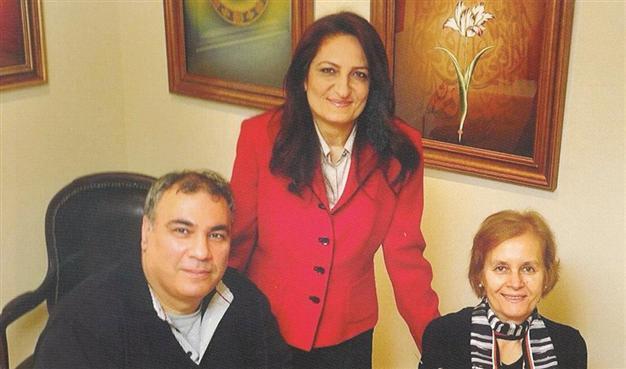Ornamentation goes to Vatican for a show
ISTANBUL- Hürriyet Daily News

Three Turkish artists Münevver Üçer (C), Kaya Üçer (L) and Reyhan İsen will exhibit their works of ornamentation in an exhibit in the Vatican City.
The Vatican City will host an exhibition featuring the art of Turkish ornamentation. The exhibition, titled “Kutsal Kelam’ın Taneleri” (Pieces of Sacred Words), will open today at the Palazzo della Cancelleria, displaying works by three Turkish artists until June 23. The exhibition is being organized under the auspices of the Turkish Ambassador to the Vatican, Kenan Gürsoy.
Mimar Sinan Fine Arts Faculty (MSGSU) Associate Professor Münevver Üçer, who brings a contemporary approach to the art of ornamentation, Kaya Üçer, a representative of hand-carved work, and artist Rehyan İsen, who is known for her ornamentation and miniature works on leaves, will all be displaying their works in the exhibition.
Speaking about the exhibition, Münevver Üçer said the European art authorities began showing an interest in the traditional art of ornamentation after such works won awards at art biennials in Florence in 2009 and 2011.
Invitation from Culture Ministry“We have received an exhibition invitation from the Vatican Culture Ministry. The word ornamentation, which means gilding, has been applied for hundreds of centuries to ornament hand-written works. We can say that it is the dress of Hüsn-hat. My main idea is to reinterpret this art by being true to centuries-old traditional rules. I believe that we can catch universalism and represent our culture in any platform by keeping classical rules at the same time. I am trying to pursue the art of our masters artists like Kara Memi, who worked in the 16th century and Ali Üsküdari of the 18th century. It is very important to me to catch a universal language,” she said.
Üçer said their goal was to make people love their own art and values. “For example, Japanese art still survives and is appreciated. We have authentic fields of art in our own culture. We have the Ottoman art. Our works are very delicate. Europeans know ornamentation and describe it as ‘wonderful.’ But we are still not still aware of our own values and need to promote this art through exhibitions.”
She said the art of ornamentation first occurred in the 8th century and developed alongside religion, particularly Islam. The exhibition will present 20 of her works on both paper and wood. Hand-carved work artist Kaya Üçer agreed that this art should be introduced to people. “Turkish society does not claim its own values, so it is then claimed by other societies. Turkish coffee, baklava, and Turkish delight are some examples … We need to introduce our own values in order to prevent this from happening,” he said. Three of his works will feature in the exhibition, in the “eclectic” style of the Tulip Period.
Reyhan İsen, who works on dried plant leaves that grow in presidential greeneries, will present seven of her unique ornamentation and miniature works.
